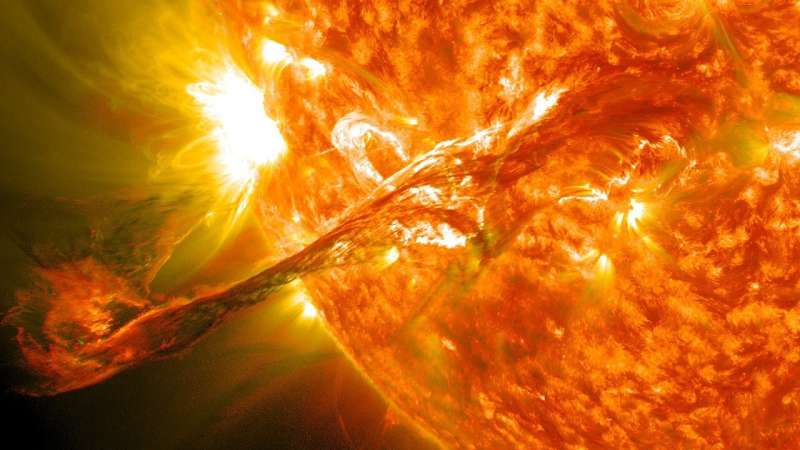The moon’s thin atmosphere, called an exosphere, has been a puzzle to science for some time. Two main processes were thought to create this wispy gas envelope; tiny meteoroids hitting the surface and solar wind particles bombarding the lunar soil. But new research using Apollo moon samples reveals that the moon’s own surface features provide surprising protection against solar wind erosion.
Researchers at TU Wien and the University of Bern conducted the first direct measurements of solar wind ejecting atoms and molecules when striking the lunar soil, a process known as sputtering. Unlike previous studies that relied on Earth-based mineral substitutes, the team used Apollo 16 moon dust and bombarded it with hydrogen and helium ions at solar wind speeds.
Published in Communications Earth & Environment, the results were striking. Solar wind sputter yields were up to an order of magnitude lower than previously used in exosphere models. This dramatic reduction comes from two key factors that previous models had underestimated, surface roughness and the porous, fluffy nature of lunar soil.
The moon’s surface isn’t smooth like a billiard ball, it’s incredibly rough and porous at the microscopic level. This texture acts like a natural shield against solar wind bombardment. When ions hit the jagged, crater-filled landscape, many get trapped in tiny pockets or strike surfaces at angles that reduce their erosive power.

The high porosity of lunar regolith further reduces sputter yields, with the combined effects of roughness and porosity making erosion rates largely independent of the solar zenith angle. This means the protective effect works across most of the moon’s surface, regardless of latitude.
The research team created three-dimensional computer simulations of the lunar surface structure, complete with the spaces between dust grains. These models revealed that the moon’s natural “fluffiness” dramatically reduces the number of atoms knocked loose by solar wind impacts.

These findings change our understanding of how the moon loses material to space. The study provides realistic sputter yield estimates which are ten times smaller than previous estimates! This suggests that micrometeoroid impacts, rather than solar wind sputtering, are likely the dominant source of the moon’s exosphere. The tiny space rocks that constantly pepper the lunar surface may be doing most of the work in creating the moon’s thin atmospheric envelope.
Understanding how solar wind interacts with airless planetary surfaces is crucial for upcoming missions, including NASA’s Artemis program and the European Space Agency’s BepiColombo mission to Mercury. As for the atmosphere of the moon, the study helps explain why previous space observations didn’t match theoretical predictions. The moon’s surface has been protecting itself all along, we just needed the right tools and real lunar samples to see how.
More information:
Johannes Brötzner et al, Solar wind erosion of lunar regolith is suppressed by surface morphology and regolith properties, Communications Earth & Environment (2025). DOI: 10.1038/s43247-025-02546-0
Citation:
How the moon’s hidden protection shields against solar wind erosion (2025, July 22)
retrieved 22 July 2025
from https://phys.org/news/2025-07-moon-hidden-shields-solar-erosion.html
This document is subject to copyright. Apart from any fair dealing for the purpose of private study or research, no
part may be reproduced without the written permission. The content is provided for information purposes only.

